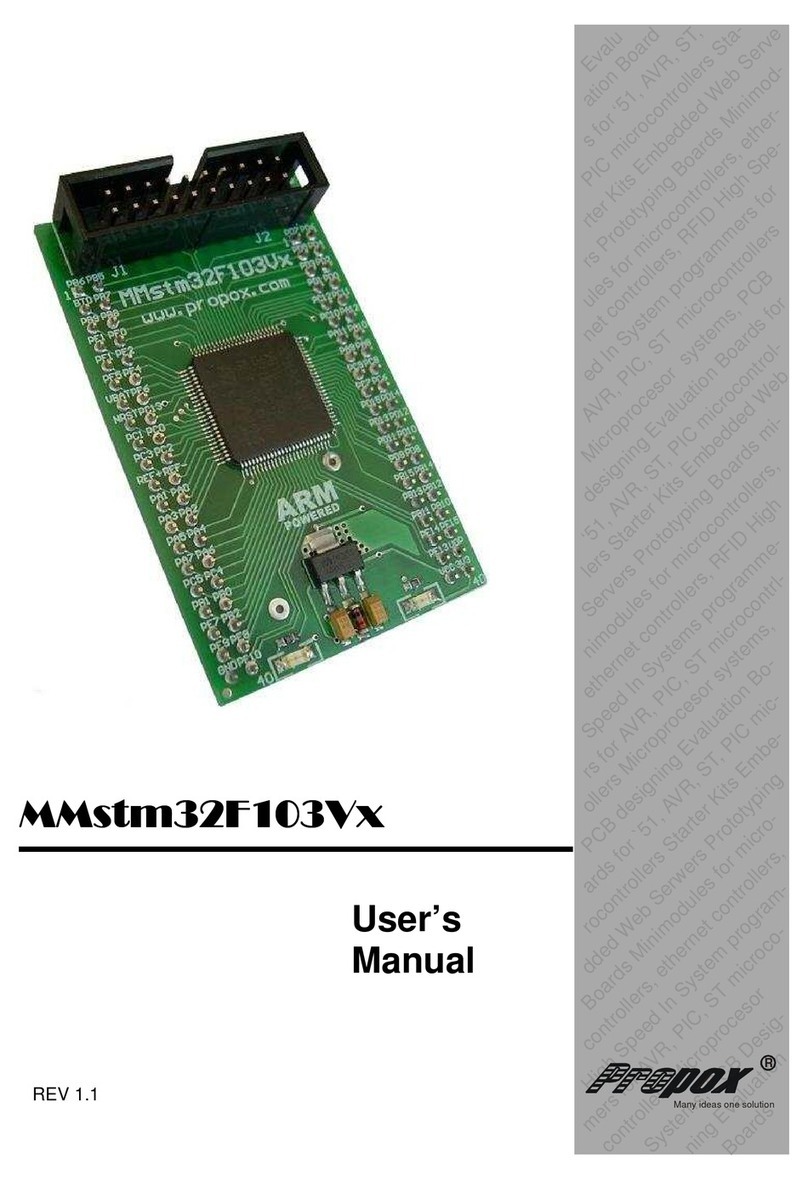
3
1.
1.1.
1.
Introduction
IntroductionIntroduction
Introduction
MMstr75xFR is universal minimodule for the STR7
ARM7TDMI-S
microcontrollers
from STMicroelectronics. This microcontroller is available in the TQFP64 case which is
difficult to apply to prototype and amateur circuits due to the compactness of pins. We have
undertaken an attempt at placing it on a board of 35,5x35,5mm with a layout of leads which
matches the commonly available prototype circuit boards. In addition, we have included
3.3V voltage regulator, a Serial Flash memory with a capacity of up to 8MB, a circuit
monitoring the supply voltage and clock generator for microcontroller. All ports and signals
of the microcontroller are lead out by means of two-row pin connectors with 0.1’ pitch. This
minimodule is not only an adapter but a complete main board for STR751FRx. It needs only
a connection to the supply voltage and to the JTAG connector and we can start loading
128kBytes of Flash memory of the microcontroller.
Through integration of the peripherals with the microcontrollers on one board, the
application of this module can lead to a shorter design period and facilitate the construction
of systems based on ARM microcontrollers, by eliminating the need to design the printed
board. The module is supplied with example software. The MMstr75xFR minimodule can
be also used in didactic laboratories of informatics colleges and universities, and can be
also used to build circuits realizing thesis projects.
Features
FeaturesFeatures
Features
MMstr75xFR Minimodule:
•
Complete, ready to use microprocessor system
•
Fast ARM microcontroller STR751FR with up to 54 DMIPS throughput
•
SerialFlash memory 64Mb (8MB)
•
Reliable reset circuit
•
Built-in system generator 8MHz
•
Built-in 32.768kHz crystal resonator for RTC
•
Built-in voltage regulator 3.3V 400mA
•
Module supply voltage: 3.3V or 3.8 - 9V
•
2 x 26 terminals with 0.1" (2.54mm) pitch fitting every prototype board
•
Small dimensions: 35.5mm x 35.5mm
•
Available evaluation board and sample applications




























